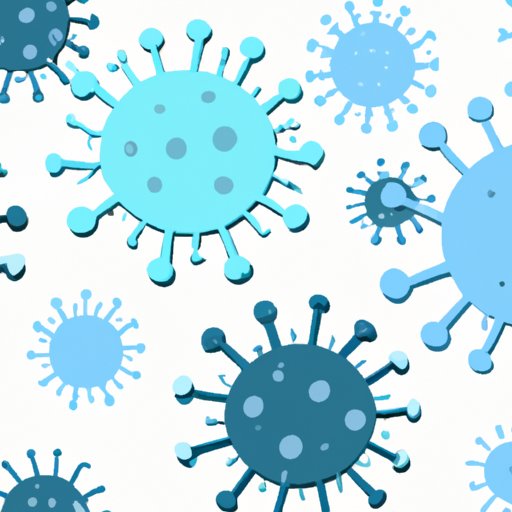
Introduction
Viruses have dominated the headlines over the past year, causing unprecedented global health concerns. Despite their notoriety, there is still much confusion around the relationship between viruses and diseases. Are viruses diseases themselves, or do they simply cause illnesses? This article aims to explore this question and provide a deeper understanding of the relationship between viruses, diseases, and illnesses.
Exploring the Relationship between Viruses and Diseases
To understand the relationship between viruses and diseases, we must first define both terms. Viruses are tiny microorganisms that invade our cells and use them to replicate themselves. Diseases, on the other hand, are conditions or disorders that can affect various parts of the body.
Viruses can cause diseases by invading and damaging our cells or by disrupting the normal functions of our bodies. Even though viruses are not themselves diseases, they are responsible for many of them. Viruses can lead to acute or chronic illness, ranging from the common cold to more severe diseases like human immunodeficiency virus (HIV) or coronavirus disease 2019 (COVID-19).
Differentiating Between Illnesses Caused by Viruses and Those Caused by Bacteria
While viruses and bacteria are both microorganisms that can cause illnesses, they differ in many ways. Bacteria are much larger than viruses and can survive on their own, while viruses need a host cell to multiply.
Common viral illnesses include the flu, common cold, measles, and chickenpox. Bacterial illnesses include strep throat, urinary tract infections, and even food poisoning. Correctly diagnosing viral and bacterial illnesses is crucial, as antibiotics are only effective against bacterial infections.
Understanding the Effects of Viruses on the Human Body and Their Ability to Cause Disease
When a virus enters the body, it multiplies in our cells and can cause widespread damage. This damage can lead to symptoms such as fever, body aches, and respiratory issues. The severity of viral illnesses can vary greatly, from mild symptoms to potentially fatal diseases.
Some viral infections can also cause long-term or chronic health problems. For example, the Epstein-Barr virus is well-known for causing infectious mononucleosis, but it can also lead to chronic fatigue syndrome. Additionally, the human papillomavirus (HPV) is responsible for many cases of cervical cancer.
How Viruses Spread and Cause Infection-Related Diseases
Viruses are very contagious and can spread from person to person through respiratory droplets, contact with bodily fluids, or touching a contaminated surface. Infection-related diseases occur when a virus invades and destroys cells in the body. This can lead to a range of symptoms, including fever, headache, and respiratory issues.
Preventing the spread of viral illnesses often involves basic hygiene practices, such as frequent hand washing and avoiding close contact with sick individuals. Vaccines are also an effective way to prevent many viral illnesses, including measles, mumps, and rubella.
The Science behind Viruses and Their Role in the Onset of Diseases
Viruses are incredibly complex organisms that have evolved to be able to infect and replicate within our cells. They have the ability to mutate and adapt, making them difficult to treat and control.
The replication of viruses involves a complex process that requires the use of our cells’ resources. As the virus multiplies, it can cause damage to our bodies, leading to illness. Some viruses can also lead to chronic diseases, such as hepatitis B or C.
Conclusion
In conclusion, viruses are not diseases themselves, but they are responsible for many of the illnesses that we experience. Understanding the relationship between viruses and diseases is crucial for correct diagnosis and effective treatment. With proper prevention and treatment methods in place, we can work to prevent the spread of contagious viruses and reduce the number of illnesses caused by them.





